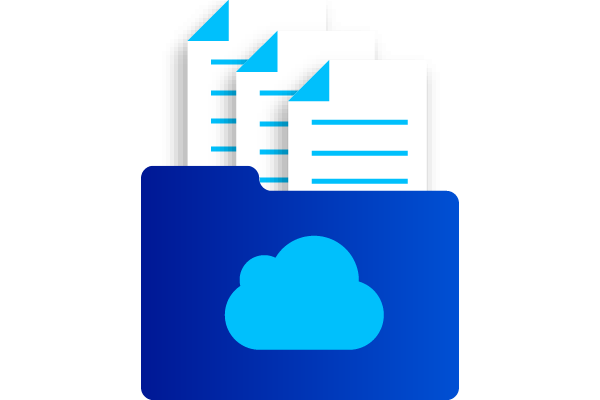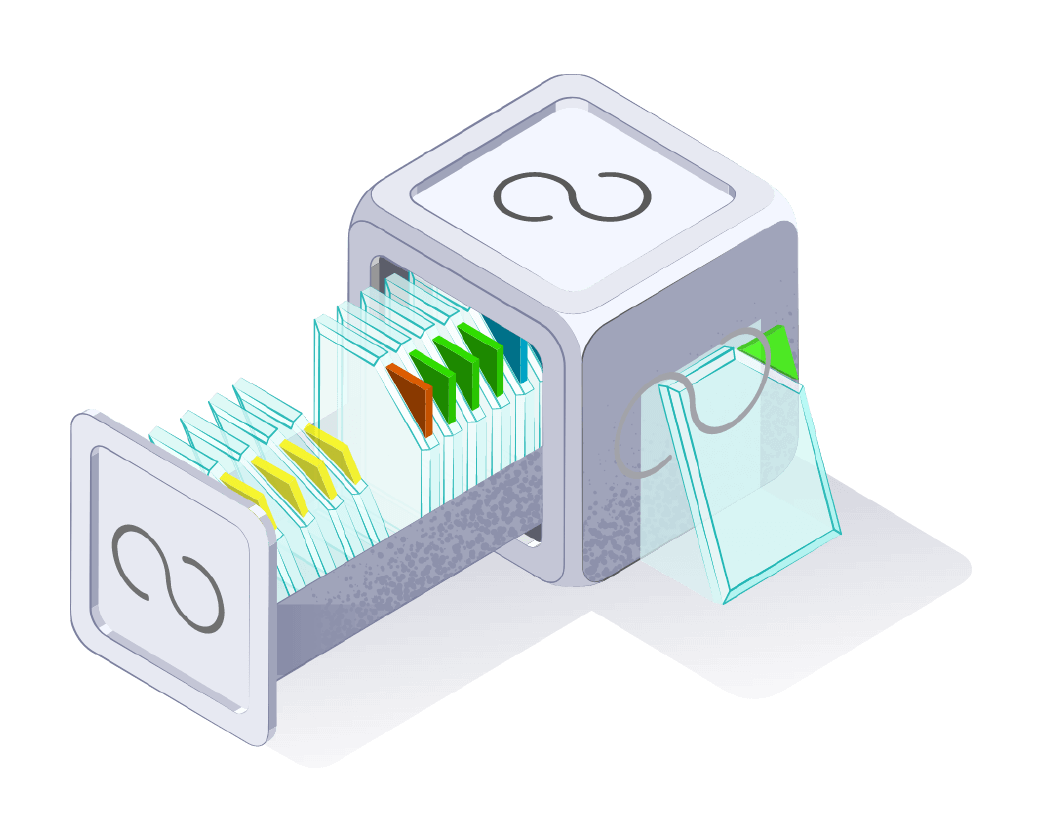What is XML?
Extensible Markup Language (XML) uses tags to tell how the text in a data file should be structured, stored and transported. Designed to be readable by both humans and machines, XML is a powerful, highly customisable tagging tool ideally suited for the data-driven era.

Defining XML
To understand what is an XML format and its code, it’s important to take a closer look at its history. The markup language was created by the World Wide Web Consortium (W3) in 1996. The W3’s goal was to create a language that could help define document types as well as offer the ability to create your own tags (unlike HTML, its close relation – see below). The resulting markup language type enables you to tag how data is defined on the page before being shared with another system as an XML file.
So long as both systems speak the same XML language – i.e., use tags they can both interpret – then both can ‘understand’ the XML file format. When XML is deployed correctly, this ensures any data file can be stored, transmitted and then used, reproducing the exact same data and its structure every single time it is accessed.
Do bear in mind the XML documents are only storing any data within a file. It cannot actually do anything with the file. Instead, software is required to carry out basic functionality such as sending or receiving the data.
What is an XML file?
An XML data is made up of text in a digital file. Like HTML, you insert tags to tell how the text should be interpreted, creating the ‘code’ needed for an XML file. For example:
This example shows there are three cloud storage options available to clients. The code features key data including name, description and monthly fee. This creates an XML document that can be shared and read between, say, a cloud provider and their franchise holders.
$code = true
<cloud_storage_options>
<option>
<name>Basic Cloud Storage</name>
<description>Standard storage with basic features.</description>
<price>£9.99/month</price>
</option>
<option>
<name>Advanced Cloud Storage</name>
<description>Enhanced storage with advanced features.</description>
<price>£19.99/month</price>
</option>
<option>
<name>Premium Cloud Storage</name>
<description>High-performance storage with premium features.</description>
<price>£29.99/month</price>
</option>
</cloud_storage_options>
Harnessing the hierarchy
Importantly, the above sample shows the hierarchical nature of XML documents. For instance:
- You create the root element. In this case, the root element is

- Contained within this root element are all other elements – known as ‘child elements’.
- There are three child elements in the above example – the three different

- Within these are further child elements including


The tags used show what each data type is with the plain text acting as the data itself. Also notice how the content is indented. This is not to help systems process the XML file but to aid humans scan through the XML file and its hierarchical order more easily so any errors or oversights can be spotted and resolved.
To create an XML document or edit one doesn’t require costly specialist application either. After all, XML is plain text so a text editor, online XML editor or a web browser can be used.
What is XML schema?
A schema acts as a ‘definition’ of the XML document. This means it profiles key rules and limits for how the XML file is structured as well as controls for content and data types – and crucially, how they interact with one another within the document. Combined, this ensures that the XML’s data integrity is protected at all times, even when being processed between different apps, even systems.
The two key schema languages are Document Type Definition (DTD) and XML Schema Definition (XSD). XSD is the most used language in XML documents because of its rich feature sets, powerful data typing capabilities, and more. However, some sectors require specific functionality from their schemas that XSD is not optimised for.
For instance, industries that leverage computer graphics-related data deploy the Scale Vector Graphics (SVG) schema to write their XML files. The SVG schema is ideal for web design/development, user interfaces and other applications as it was specifically created for the description of two-dimensional vector graphics. Other specialist schema languages include Mathematical Markup Language (MathML) and Chemical Markup Language (CML), their specific uses self-explanatory.

What is XML syntax?
If XML schemas such as XSD are all about detailed specs for the XML document to ensure it is valid, XML syntax offers a set of rules for managing and governing the overall structure of an XML file. For example, XML syntax can cover text content such as self-closing elements (a single piece of information with no need for additional content) or an XML declaration (used at the beginning of the document to profile key information such as character coding), and which XML version the doc is using.
What are the different versions of XML?
XML has been around since 1998 when 1.0 was published by the W3C. XML 1.1 touched down in 2004 to address several existing issues as well as introduce new features. While no new version has been launched since 2004, a Second Edition of 1.1 (2006) and a Third Edition (2017) were introduced to boost XML’s stability.
What are the differences between XML vs HTML?
If you are familiar with HTML, the way XML files deploy tagging will look very familiar – but there are two key differences between the mark up languages:
HTML is used to show how data should be presented onscreen with a web browser able to understand it. The XML file format is used to show how the data should be structured and look with an application able to process and present the data correctly.
Software though can only do this if it has been programmed to understand the XML tags used in the XML file format. This introduces XML’s key strength compared to HTML. The latter has a fixed list of tags that can be used. However, XML is extensible, allowing you to create as many of your own unique tags as you want to manage your data sets.
Crucially, XML documents can be utilised – or offer a supporting role – in many different areas of an IT strategy. From data processing and going cloud native to block storage and building bots, XML’s versatility and flexibility make it an essential tool for any business committed to using the full potential of all enterprise assets.
What are the disadvantages of XML?
One of XML’s great strengths is its exceptional versatility, enabling users to tag their data however they wish via custom tagging. Ironically, this also represents XML’s Achilles Heel: The need for the XML file’s receiver – such as an application – to understand each unique tag or set of rules. After all, what’s the point of a perfectly tagged XML file if it can’t be read, interpreted and acted on by the applications receiving it?
To overcome this issue, XML files can be supported by an XML stylesheet (XSLT), which can be shared between the two parties. These can be utilised to create a standardised XML format, language and rules between the entities so all information and characters can be shared and read effortlessly without anything being ‘lost in translation’.
To minimise this issue further, sectors such as finance and e-commerce have created XML dictionaries to ensure all XML files can be deciphered and read by defining set rules. These seek to bring uniformity to tag definitions and can be embedded in XML documents to remove any potential compatibility issues at source.
What applications can XML be used for?
XML has a wide range of uses cases and explains why it is one of the most popular languages. Key uses include:
Transferring
Because they are platform-agnostic, XML files are perfectly suited for transferring data between different systems, software applications (such as databases) and programming languages.
Managing
The unique tagging system of the XML file format makes it ideal for efficient document managing, enabling any document’s content to be uniquely tagged so it can be more easily categorised, searched and retrieved.
Searching
The ability offered by XML documents to add rich metadata via tagging also helps with search engine optimisation, enabling search engines to pull out specific info based on unique tags rather than offering up generic results.
Publishing
XML files make organising and managing digital assets within a content management system more efficient, again the ability to tag unique features about particular assets a huge gain for users.
Configuring
The tagging offered by the XML file can be used to structure the often complex configuration settings of software applications, making any options or parameters easy to understand and modify.
Developing
Perhaps unsurprisingly, XML can work hand in hand with HTML, making the structuring of data for web apps effortless, and can even help define user interfaces depending on screen sizes and other UX elements.
Creating
The XML documents format can help with many aspects of website creation from exchanging data between a site and other systems through to sitemap uploads and RSS feeds. It’s why you should always check your web hosting solution supports XML’s diverse range of offerings.
What are the benefits of XML documents for business?
There are several advantages to deploying XML formats within operations as well as communicating with other businesses or partners:
Share seamlessly
An XML file offers you the ability to share information between all your different systems and departments in one standardised open format to avoid compatibility issues, all while boosting collaboration rates.
Readability as standard
Like HTML, to read an XML document is actually simple as it has been designed to be human-readable. This enables stakeholders to decipher and understand whatever they are looking at.
Automate at speed
XML documents allow info to be shared automatically and accurately. For instance, business-to-business online markets are already leveraging the language to line up sellers with buyers, enabling them to complete deals more quickly.
Recognition guaranteed
An XML file is recognised by nearly all types of platforms from desktop apps and mobile to web browsers, meaning it’s a true universal standard, not a specialist language or code requiring specialist skills to leverage.
Flex more easily
An XML file offers you huge flexibility and scalability benefits thanks to its ability to manage vast data volumes – no matter the medium – whether it’s text or video, images or graphics.
OVHcloud and XML format for Websites
Our web hosting offers full support for XML file deployment in website generation as well as a host of other core features to ensure your website is optimised for this digital-first era. Crucially, our solutions are known for their simplicity, flexibility and performance, all delivered by a fully pre-installed infrastructure that is always available, monitored 24/7, and kept up to date with the latest updates and security patches.

Get a free domain name
We offer a free domain name for one year when you subscribe to any OVHcloud web hosting plan. You can find your domain with over 800 extensions to choose from so you can define your true digital identity. Our extensions include: com, net, biz, info, org, name, fr, re, eu, be, es, it, de, at, co.uk, me.uk, org.uk, nl, us, ca, cz, ch, in, lt, dk, pm, so, se, yt, tf, wf, pt, pl, ovh, and xyz*.

Create a website
Want to build a website? Build it in five steps using content management systems (CMS) that are recognised and recommended by our teams, such as WordPress, PrestaShop, Drupal and Joomla!.

Transfer domain names
Transfer your domain name to OVHcloud so both your data and your customers’ data is always protected, while ensuring you retain full control over all data sets. For each domain name transferred, you also get a wide range of options included, so you can quickly develop an effective future-proofed online strategy.
*The following extensions are included for a period of one year with any purchase of an OVHcloud web hosting plan, then renewal is charged at the annual price for the extension selected from the following list: .com, .shop, .store, .tech, .me .live, .space, .xyz, .online, .site, .pro, .cloud, .blog, .name, .ovh, .boutique, .net, .org, .info, .eu, .fr .re, .be, .it, .de, .co.uk, .pl. Not valid for extensions that include free transfer.